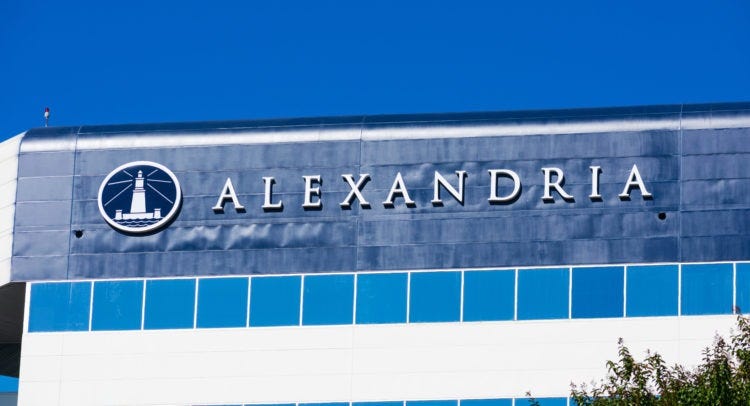👋 Howdy Partner,
Today we’re taking a look at a REIT that could be very interesting.
It’s cheap. It’s well-managed. And - best of all - it’s paying the highest dividend yield we’ve seen in over a decade.
The dividend is well covered by Funds From Operations (FFO). The balance sheet is rock solid. And the tenants? Try Eli Lilly. And Google.
That’s right. Big Pharma and Big Tech are sending rent checks to this company every month - under long-term contracts.
Want to know what it is?
Keep reading.
Company Overview
Alexandria Real Estate Equities ($ARE) is a pioneering REIT focused on life science and biotech campuses, primarily located in innovation hubs like Boston, San Diego, and the San Francisco Bay Area.
They lease to high-quality tenants such as Moderna, Eli Lilly, and Bristol Myers Squibb. As of Friday, the stock trades at $72, offering a dividend yield of approximately 7.2%.
Financial Performance (2015–2024)
Funds From Operations per Share
FFO per share has been a bit lumpy over the past 10 years, but the overall trend is up.
Revenue & Earnings
2024 Revenue: $3 Billion
2024 FFO per Share: $8.11
2025 FFO Guidance: $9.26
Dividend per Share
Alexandria Real Estate has increased its dividend for 15 straight years, with a 5.2% 5-year CAGR.
Payout Ratio
The dividend is well covered by FFO:
Outlook for 2025–2026
FFO Guidance: Management projects 2025 FFO of $9.26 per share, indicating continued growth
Occupancy Rates: Portfolio occupancy was at 91.7% at the end of Q1. This is down about 3% from Q4, but 2/3 of it is explained by known lease expirations. Much of that is related to Moderna moving from one Alexandria property into a new headquarters that Alexandria built and developed for them.
Debt: Alexandria has one of the longest average weighted debt maturities at 12.7 years, with an average interest rate of 3.86%.
Their balance sheet is very solid with a Debt/Equity of 0.6, and an investment-grade credit rating.
Capital Allocation
Megacampus Strategy
Alexandria Real Estate builds large campuses in key biotech hubs like Boston, San Francisco, and San Diego with high-tech labs, offices, and amenities like cafes and gyms. These are near top universities to attract talent and encourage collaboration.
Benefits of the strategy:
Stable Income: Creates high demand from biotech tenants with long-term leases
Attracts Talent: Great locations and amenities help companies hire top workers
Boosts Innovation: Campuses encourage companies and departments to share ideas, speeding up research
Capital Recycling
Alexandria is focusing heavily on the Megacampus Strategy. They have been selling off less profitable or non-core properties (like office or industrial buildings) to raise capital. They then use this cash to invest in Megacampuses.
This means that Alexandria has not had to issue as many shares as a typical REIT to keep growing. In fact, they’ve been buying back shares recently.
Risks and Considerations
Industry Concentration: Alexandria is entirely focused on life science companies in the United States. Any kind of disruption in that industry would have a negative impact on Alexandria.
Political Risk: The current administration has cut research funding and cancelled grants. The current budget proposal that has passed the House of Representatives includes large cuts to the Health and Human Services Department, and Secretary Kennedy is threatening to ban government scientists from publishing in medical journals.
Valuation Metrics: The stock trades at a forward 12-month price-to-FFO ratio of about 7.8x, below average P/FFO of around 14x, suggesting a potentially attractive valuation.
ARE is also trading at one of the highest dividend yields in the past 10 years.
Summary and Valuation
You’ve already seen that Alexandria looks undervalued based on the current Dividend Yield when compared to the historical.
Let’s see how it looks based on the Earnings Growth Model and Reverse DDM:








